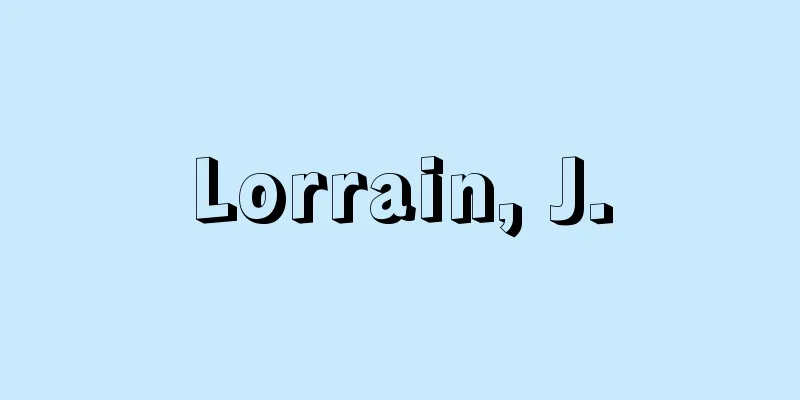Commercial capital - English

|
Under capitalism, commercial capital is capital that is separated from the total social capital and becomes independent from industrial capital in the circulation process. In the movement of industrial capital, there is money capital, which is constantly trying to transition into commodity form as circulating capital, and commodity capital, which is trying to become monetary form, and is undergoing a transition in the circulation process. When this transition of capital in the circulation process and the accompanying purely technical movement of money circulation become independent as functions of a special type of capital, and are assigned and fixed as a function of a special type of capitalist who specializes in distribution through the social division of labor, commodity capital becomes commodity-handling capital, and money capital becomes money-handling capital. These two are collectively called commercial capital. The former is tasked with buying and selling goods, and the latter performs purely technical operations such as payment, receipt, exchange, and storage of money associated with the exchange. Since commodity-dealing capital does not produce commodities but only buys and sells them, its movement is to invest money G to buy commodities W and then sell them again. In this way, it uses the commodity capital of industrial capital as an intermediary to carry out the movement G-W-G' of buying in order to sell, and derives profits from it. Thus, through the first movement of commercial capital G-W (purchase), industrial capital makes the final sale, but the commodity is merely transferred to the hands of the merchant. It is only through the second movement W-G' (sale) that the commodity is finally realized into money, accompanied by profit. What is to industrial capital a simple sales process W'-G' appears to the intermediate merchant as G-W-G', the unique movement of the special capital known as commercial capital. Thus, by the specialized intervention of commercial capital in the circulation process, not only is commodity capital realized more quickly than if it were in the hands of the producers themselves, but by acting as an agent for many industrial capitals, circulating capital costs less than would be required for individual industrial capitals, allowing more of the total capital of society to be directed to productive capital, producing more surplus value, and as a social result increasing the rate of profit. It also shortens the circulation period of industrial capital, which limits the growth of value, for society as a whole, saves on circulation costs, which are socially wasted and deducted from the total surplus value, shortens the average turnover period of the total capital of society, and increases the rate of profit. However, since the distribution process itself does not create value, the speed of turnover of commercial capital does not directly affect commercial profits, and the faster it turns over, the lower the profit rate per turnover and the lower the selling price. This phenomenon gives merchants the idea of selling large quantities at low prices. On the other hand, because merchants continue to buy goods before they finally sell them, an imaginary social demand is created, which expands the reproduction process to an extreme degree, creating contradictions that require violent adjustment through depression. Thus, commercial capital that functions in the distribution process does not create or increase value, nor does it generate its own profit from the distribution process; it merely mediates the realization of value. [Kaido Katsutoshi] [Reference items] | |Source: Shogakukan Encyclopedia Nipponica About Encyclopedia Nipponica Information | Legend |
|
資本主義のもとでは、商業資本は、社会的総資本のうち流通過程にある産業資本が分離し、自立化した資本である。産業資本の運動のなかには、流通資本として絶えず商品形態に移行しようとする貨幣資本と、貨幣形態になろうとする商品資本とがあり、流通過程の移行を行っている。流通過程のこのような資本の移行と、それに伴う貨幣流通の純技術的な運動が、特殊な一資本の機能としてそれぞれ独立し、社会的分業によって流通を専門的に分担する特殊な資本家部類の一機能として割り当てられ、固定化するとき、商品資本は商品取扱資本となり、貨幣資本は貨幣取扱資本となる。この両者を一括して商業資本とよぶのである。前者は商品の売買を任務とし、後者は交換に伴う貨幣の支払い、出納、両替、保管などの純技術的操作を行う。 商品取扱資本は商品を生産するのではなく、商品を売買するだけだから、その運動は貨幣Gを投じて商品Wを買い、ふたたびこれを売るのである。このように、産業資本の商品資本を媒介にして売るために買うG―W―G'の運動をとり、自らも利潤を引き出すのである。したがって商業資本の第一の運動G―W(購買)によって産業資本は最終的販売をしたことになるが、商品は商人の手に移ったにすぎない。商品は第二のW―G'(販売)によって初めて利潤を伴いながら最終的に貨幣に実現する。産業資本にとっては単なる販売の過程W'―G'が、これを媒介する商人にはG―W―G'として、商業資本という特殊な資本の独自な運動として現れるのである。 こうして商業資本が流通過程に専門的に介在することにより、商品資本そのものが生産者自身の手になる場合より速やかに実現されるばかりではなく、多数の産業資本の代理者となることにより、流通資本が個々の産業資本の必要とする場合より少額で済み、社会の総資本のうち、より多くを生産資本に振り向け、より多くの剰余価値を生産し、その社会的結果として利潤率を高める。また、価値増殖の制限となる産業資本の流通期間を社会全体として短縮し、社会的には空費となり、総剰余価値からの控除となる流通費を節約し、社会の総資本の平均回転期間を短縮し、利潤率を高める。 とはいえ、流通過程そのものは価値を生み出さないゆえ、商業資本の回転速度は商業利潤には直接影響を与えず、回転が速まれば1回転当りの利潤率は低くなり、販売価格は低下する。この現象が商人に薄利多売の観念を与えるのである。他方、商人は買った商品を最終的に販売しないうちに購買を続けるので、架空の社会的需要が生まれ、これが再生産過程を極度に膨張させ、恐慌による暴力的調整を要する矛盾を醸成する。 このように流通過程で機能する商業資本は、価値創造も価値増殖もせず、自己の利潤も流通過程から生ぜず、ただ価値の実現を媒介するだけである。 [海道勝稔] [参照項目] | |出典 小学館 日本大百科全書(ニッポニカ)日本大百科全書(ニッポニカ)について 情報 | 凡例 |
<<: Preface to the Sacred Teachings - Shogyo no Jo
>>: Constant practice - Jōgyōsanmai
Recommend
ascospore
…In Ascospores, a pouch-like sporangium (ascus) i...
Eshu - Eshu
...Typical examples include a trickster who uses ...
Luo-yue-guo; Lo-yüeh-kuo
A country thought to have been located at the sout...
Bibai [city] - Bibai
A city in central Hokkaido. Established as a city ...
Eurobracon brevitorebrae (English spelling)
…[Setsuya Momoi]. . . *Some of the terminology ex...
Teaching material
Materials prepared according to the needs of teach...
Retirement allowance
A general term for monetary benefits paid by a co...
Nuclear magnetic resonance
This refers to magnetic resonance caused by atomi...
Schizaea dichotoma (English spelling) Schizaeadichotoma
…[Kunio Iwatsuki]. … *Some of the terminology tha...
Kameyama Domain
(1) During the Edo period, this clan ruled the Kam...
Cawnpore
…A large industrial city in the central part of t...
Ghadameci
…It was said to have a silky soft feel. In the 8t...
Badminton - badminton (English spelling)
It is a sport in which players hit a shuttlecock ...
General linguistics and French linguistics
…His related works include “Précis de stylistique...
Ito Jinsai
A thinker of the early Edo period. Born on July 2...









